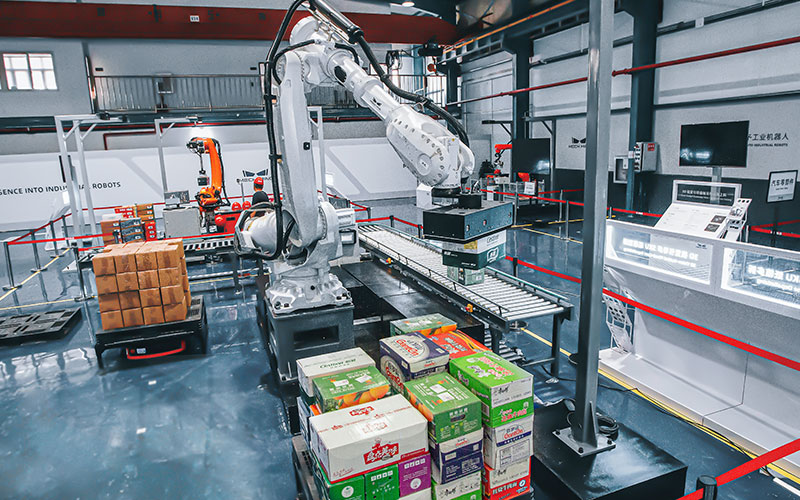Keeping track of tools is critical to productivity for manufacturers across all industries. Losing, forgetting or tampering with tools can lead to lost time and money. Via the ISA (International Society of Automation) factories and manufacturers lose 5% to 20% of productivity due to downtime from issues such as lost or missing tools and equipment. The best way to track tools is with RFID tags, which can be scanned from a distance and without line of sight. These tags store data that allows you to know the history of a tool, when it was purchased and who is using it. RFID is commonly used in retail to keep track of inventory throughout supply chains to ensure items are in stock. An RFID tool tracking system is an ideal solution for teams looking to improve tool and equipment usage.
Why Should You Use RFID for Tool Tracking?
Tool inventory management is an essential part of any successful business. It helps ensure that your team has access to the necessary equipment they need to complete their work efficiently. It can also prevent costly mistakes that may result in lost or misplaced tools.
But, it can be difficult to implement this process properly. Many businesses fail to do so, leading to costly lapses and unsafe conditions. In addition to this, it can lead to missed production deadlines and reduced customer satisfaction.
In most cases, the problems stem from manual tool inventory management, relying on foam organizers, sign-in/sign-out procedures, visual IDs, or barcodes. It can be time-consuming to record and locate tools, causing employees to waste a significant amount of time searching for them.
Aside from that, it can also create an environment where employees are more likely to misplace or lose tools. The process of searching for tools can also be stressful, preventing technicians from completing their jobs as quickly as possible.
Luckily, there is an easy and cost-effective solution to these issues. With an RFID tool tracking solution, your employees will be able to locate tools within seconds and easily log them when they are checked out or returned.
What Type of Tools Can You Track With RFID?
RFID tools can be used to track all types of items in your company:
- Forklifts
- Pallets and pallet trucks
- Drum handling equipment
- Industrial ladders
- Hydraulic stackers
- Reusable bins
- Carts and dollies
- Dock equipment
You can implement a tool tracking solution for any size of business and any industry. Before you decide on a solution, consider the type of tools that you need to track, as well as how large your business is. You can then choose the best system for you.

5 Major Use Cases for RFID Tool Tracking:
In manufacturing environments, RFID-based tool tracking plays a pivotal role in enhancing operational efficiency and ensuring the seamless flow of production processes. Here are five main use cases for RFID tool tracking in manufacturing:
1. Real-Time Visibility and Location Tracking
RFID enables real-time tracking of tools, providing instant visibility into their precise locations within the manufacturing facility. This ensures that tools are readily available when needed, reducing downtime and improving workflow efficiency.
By embedding RFID tags onto manufacturing tools, each tool becomes uniquely identifiable, allowing for precise tracking and monitoring. RFID readers strategically placed within the manufacturing facility can then capture the RFID signals emitted by the tags, providing real-time visibility into the location and status of each tool. This enables manufacturers to monitor tool usage, track tool movements between workstations, and identify potential bottlenecks or inefficiencies in the production workflow.
2. Tool Utilization and Optimization
By monitoring the usage patterns of tools through RFID, manufacturers can gain valuable insights into which tools are in high demand and which may be underutilized. This information helps in optimizing tool allocation and ensuring that resources are allocated where they are most needed.
3. Preventing Loss and Theft
RFID technology allows for the implementation of alerts and alarms in cases where tools are moved or leave designated areas without proper authorization. This serves as a powerful deterrent against theft and ensures that tools remain within authorized zones.
4. Automated Maintenance Scheduling
RFID tags can be programmed to store maintenance history and schedules for each tool. This allows for automated tracking of tool usage and triggers alerts when maintenance or calibration is due, ensuring that tools are always in optimal working condition.
5. Compliance and Traceability
In regulated industries, such as aerospace or medical manufacturing, maintaining compliance with stringent quality and safety standards is paramount. RFID-based tool tracking provides an auditable record of tool usage, calibration, and maintenance, facilitating compliance with industry regulations and standards.
How Do You Implement an RFID Tool Tracking Solution?
The first step in implementing an asset tracking system is to set up your hardware and software. You’ll need RFID readers, as well as a network infrastructure. You’ll also need a software application to run the system.
RFID tool tracking is an excellent solution for organizations looking to improve their overall operations and efficiencies. With an RFID tracking system like CYBRA’s Edgefinity IoT, manufacturing brands can reduce lost tools, and make it much easier to locate tools as needed.
Once you have the equipment and software in place, you’ll need to select a tool tracking solution that fits your needs. There are a few things that you’ll need to look for in the solution, including compatibility, readability and affordability.



